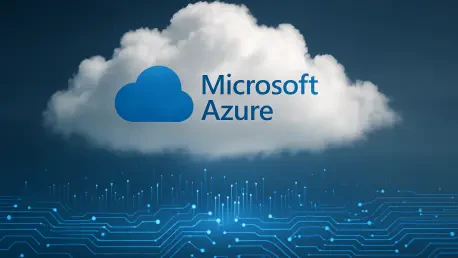In a bold move demonstrating its commitment to innovation and data protection, Microsoft has transitioned its Windows Key Management Licensing Service (MKMS) to its Azure platform. This strategic migration represents a significant shift from traditional on-premises data centers to Azure’s cloud infrastructure, prioritizing both enhanced security measures and operational efficiency. By leveraging Azure Confidential Computing (ACC) and Managed Hardware Security Modules (mHSM), Microsoft aims to tackle the evolving challenges of cybersecurity while also improving service reliability and cost efficiency. This move is part of Microsoft’s Secure Future Initiative, a comprehensive plan to align with cloud-first strategies.
Leveraging Azure’s Security Features
Azure Confidential Computing and Trusted Execution Environments
A key pillar of Microsoft’s enhanced security strategy involves adopting Azure Confidential Computing (ACC) to protect data privacy during processing. ACC utilizes Trusted Execution Environments (TEEs) to create isolated secure enclaves within the processor, ensuring that sensitive data remains inaccessible to unauthorized entities, including cloud administrators. This advancement in security technology complements existing data encryption protocols implemented by Azure, offering a more robust protection of data at rest, in transit, and in memory through its Confidential Virtual Machines (CVMs).
The use of TEEs marks a critical improvement for Microsoft’s security framework, giving users confidence that their data remains confidential even while being actively processed. This step is particularly noteworthy as cybersecurity threats become increasingly complex and sophisticated. By isolating sensitive information within dedicated secure enclaves, Microsoft minimizes the risk of data breaches, even in the face of internal or external threats. Such developments underscore Microsoft’s commitment to pioneering new solutions in data security, setting a standard for other tech companies navigating similar challenges in cloud-based environments.
Managed Hardware Security Modules (mHSM)
Another significant advancement in enhancing security is Microsoft’s integration of Managed Hardware Security Modules (mHSM) into their operations. mHSMs are highly specialized tools designed to generate, store, and protect cryptographic keys with exceptional resistance to both physical and logical attacks. In cases where tampering is detected, mHSMs can self-destruct or erase keys to prevent potential security breaches. This capability is crucial for a system handling billions of licensing requests daily, as it ensures resilience against any form of data compromise.
The integration of mHSMs into Microsoft’s Azure infrastructure delivers clear advantages by safeguarding user data, while also alleviating potential vulnerabilities associated with traditional on-premises systems. As mHSMs become more prevalent within Microsoft’s architecture, they bring in sophisticated defense mechanisms that help maintain data integrity by thwarting potential attacks. Furthermore, this transition signifies a broader trend among leading tech companies to adopt cutting-edge technologies for bolstering data security, ultimately serving as a model for industry-wide best practices.
Driving Efficiency and Cost Effectiveness
Operational Improvements and Performance Gains
Beyond enhancing security measures, Microsoft’s shift to Azure has yielded significant improvements in operational efficiency and performance. By migrating from on-premises systems to a cloud-based platform, Microsoft reports outcomes that not only match but surpass prior performance benchmarks. The cloud infrastructure has facilitated greater throughput and reliability in processing licensing requests, reflecting the scalability and elasticity of Azure’s architecture. This transition highlights Microsoft’s ability to leverage cloud technology for enhanced operational efficiency.
The shift to Azure also addresses previous limitations associated with hardware constraints found in traditional setups. By eliminating the need for frequent hardware refreshes, Microsoft significantly reduces capital expenses. The scalable nature of cloud computing ensures that infrastructure costs adapt to actual demand, providing a level of financial flexibility unavailable in fixed-capacity systems. Such advancements underscore the long-term cost benefits of moving to a cloud-first model, cementing Azure’s role as a cornerstone of Microsoft’s modern business strategy amidst rising demands for scalable, efficient solutions.
Trends in Cloud Adoption
Microsoft’s strategic migration to Azure aligns with a wider industry trend among major technology companies to embrace cloud computing’s benefits for both security enhancement and operational efficiency. The transition enables businesses to maintain high standards of data protection without incurring exorbitant costs associated with traditional IT infrastructure. As companies continue to navigate the complexities of the digital landscape, leveraging cloud platforms like Azure offers a path toward seamless adaptability and innovation.
This trend reflects a growing consensus that cloud-based solutions represent not only a prudent business strategy but also a necessity in meeting modern-day cybersecurity and operational challenges. Microsoft serves as a prime example for others in adopting cloud computing as a means to accelerate digital transformation while ensuring robust data protection and service reliability. Moreover, this paradigm shift propels organizations toward future-ready infrastructure that can swiftly adapt to emerging technologies and market dynamics.
Future Outlook for Cloud Security and Efficiency
In a bold move showcasing its dedication to innovation and safeguarding data, Microsoft has shifted its Windows Key Management Licensing Service (MKMS) to the Azure platform. This strategic migration marks a notable transition from customary on-premises data center operations to Azure’s expansive cloud infrastructure, emphasizing improved security and operational efficiency. By utilizing Azure Confidential Computing and Managed Hardware Security Modules, Microsoft not only addresses the growing cybersecurity challenges but also enhances service reliability and optimizes costs. This initiative forms a crucial part of Microsoft’s Secure Future Initiative, which is designed to align with cloud-first strategies, reflecting the company’s vision for a more secure and efficient technological landscape. Through this transition, Microsoft is underscoring the importance of modernizing infrastructure to meet current and future demands, ensuring a proactive approach to operationalizing data protection and service enhancements in a digital age.









